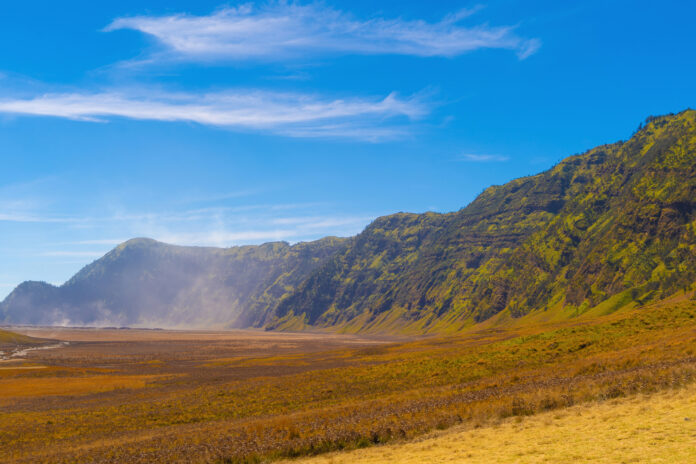
A significant blaze in the vicinity of Mount Bromo has resulted in a range of adverse consequences, primarily caused by the flares brought in by visitors. To expedite the recovery process for this area, the Ministry of Environment and Forestry (KLHK) is currently engaged in a comprehensive four-pronged rehabilitation effort, as outlined by the Ministry of Tourism and Creative Economy (Kemenparekraf).
Nia Niscaya, an eminent expert in Tourism and Creative Economy at Kemenparekraf, elucidated the four facets of rehabilitation being undertaken to rejuvenate “New Bromo,” encompassing physical, economic, social, and management rehabilitation initiatives.
“In the ongoing phase of physical rehabilitation, we are focusing on activities such as tree planting, seedling cultivation, and bolstering infrastructure by importing two vehicles from Jakarta,” elucidated Nia during a session of ‘The Weekly Brief with Sandi Uno’ held at the Kemenparekraf headquarters in Jakarta on Monday (25/9/2023).
Moreover, KLHK is concurrently undertaking management rehabilitation efforts, which include the replacement of Bromo’s fire extinguishing equipment. Furthermore, there is a concerted endeavor in the realm of social rehabilitation, featuring community education programs.
Nia expounded on the significance of social rehabilitation, highlighting the dynamic relationship between Bromo and the Tengger Semeru community. It is worth noting that Bromo is a pivotal tourist destination, earning its place among Indonesia’s top ten priority locations.
During the same engagement, Nia disclosed a staggering financial loss incurred due to the 13-day closure of the Mount Bromo Tourism Area following a fire that engulfed the savanna area of Teletubbies Hill within the Mount Bromo region of East Java on Wednesday (6/9/2023). The Ministry of Tourism and Creative Economy (Kemenparekraf) calculated this loss, considering two fundamental dimensions. First, there was a loss of revenue stemming from ticket sales, and second, there was the impact of tourists’ spending while visiting the destination.
The magnitude of this loss, arising from the 13-day closure, amounted to approximately Rp 89,762,129,253. This figure encapsulates the total economic repercussions.
To break down the numbers, Nia shared that on a typical day, Mount Bromo generates revenue of Rp 121,383,809 from ticket sales for entry to the destination. Simultaneously, the daily expenditure of visitors to Mount Bromo amounts to an impressive sum of approximately Rp 6.7 billion.
To illustrate further, for one day of closure, the potential loss of revenue is estimated at around Rp 1.5 billion, or more precisely, Rp 1,577,989,515. The cumulative spending loss over the course of the 13-day closure is calculated to be around Rp 89,184,139,737, a significant portion of which is attributed to visitor spending.
Furthermore, Nia delved into the details by emphasizing that these figures were derived from a comprehensive analysis that considered various variables. These factors included the daily influx of tourists, the pricing structure for admission tickets based on tourist categories (domestic or foreign visitors), the average expenditures of tourists during their visits, and the duration of Mount Bromo’s temporary closure.






















